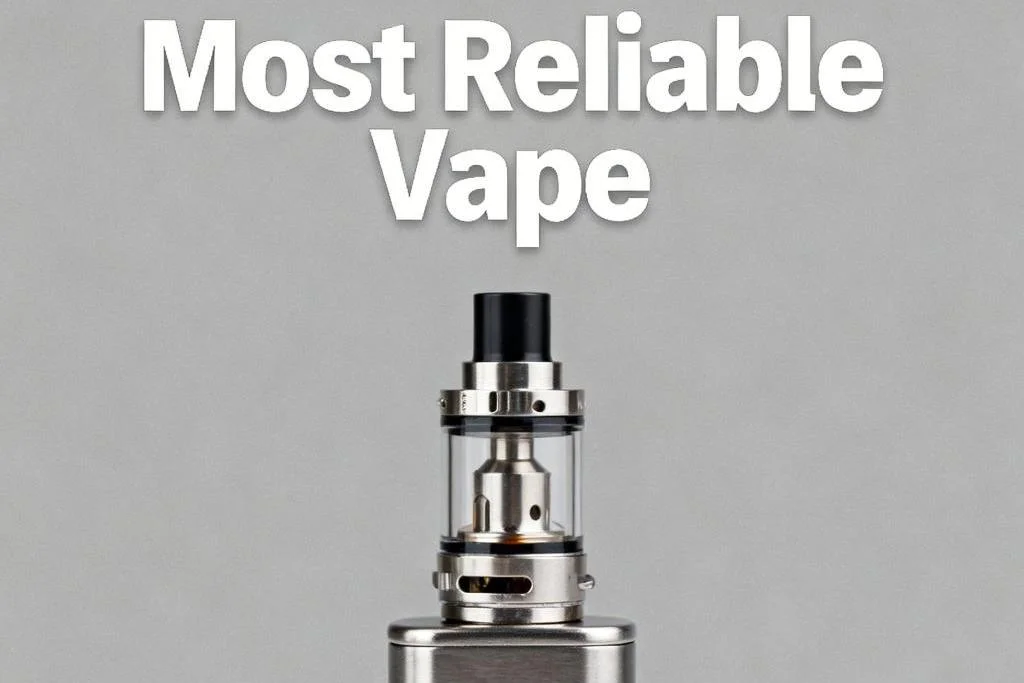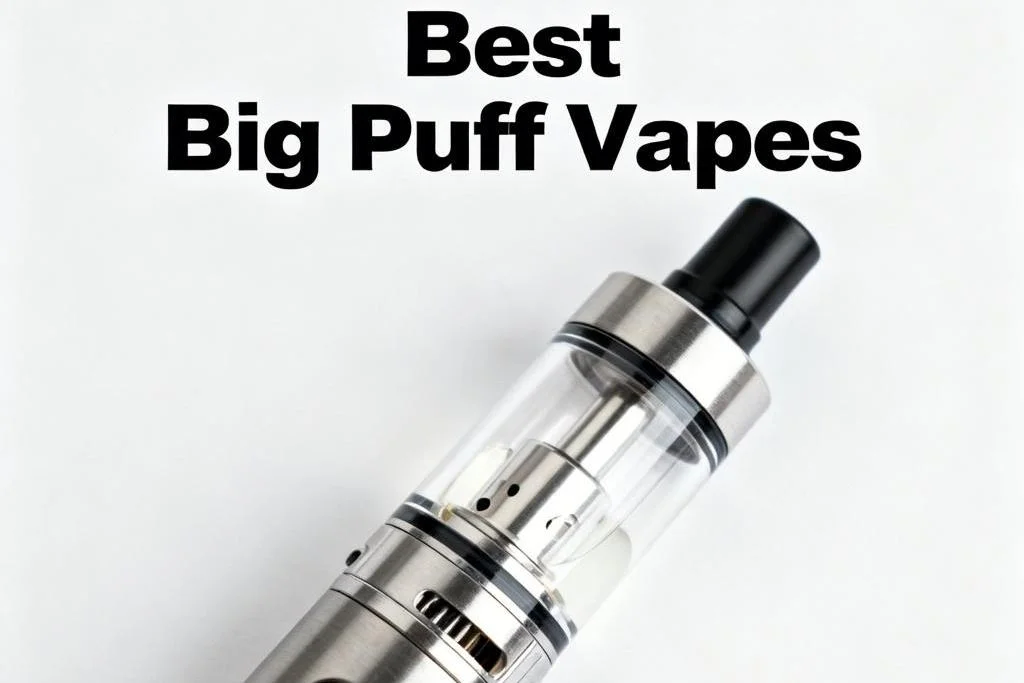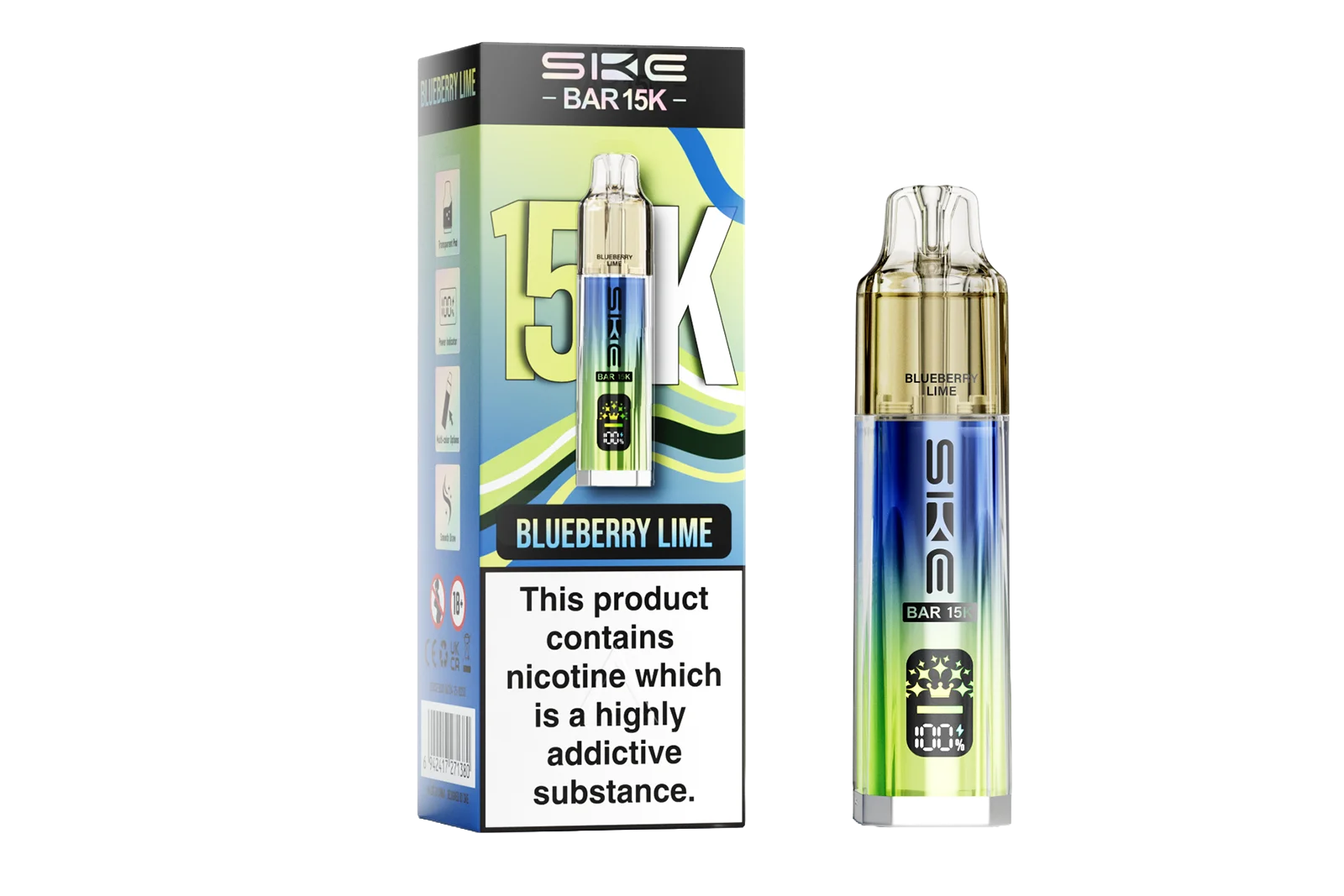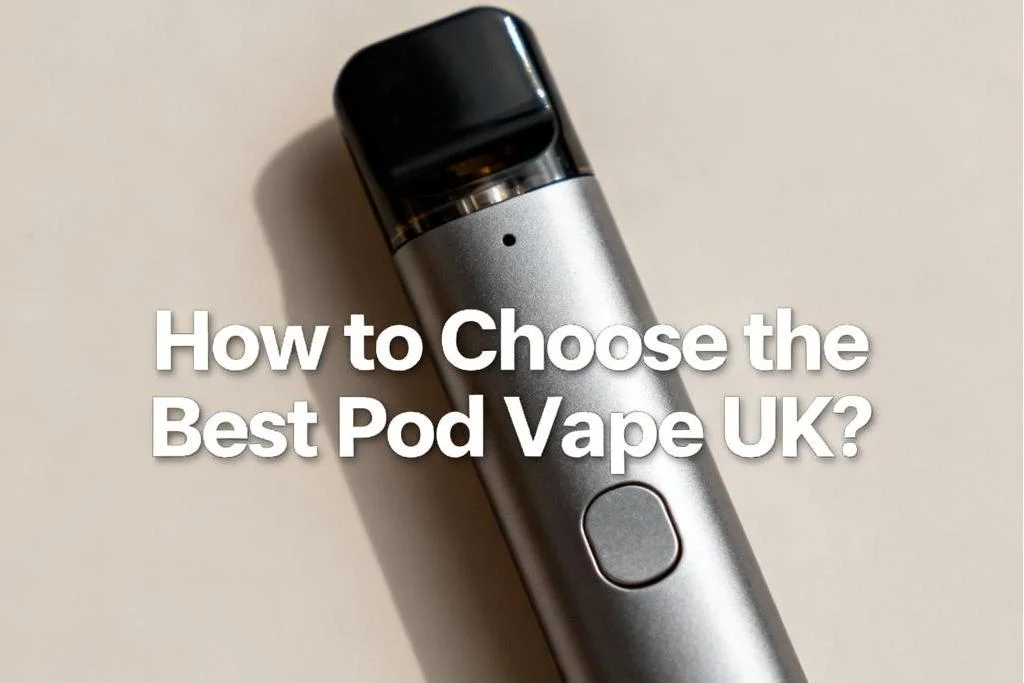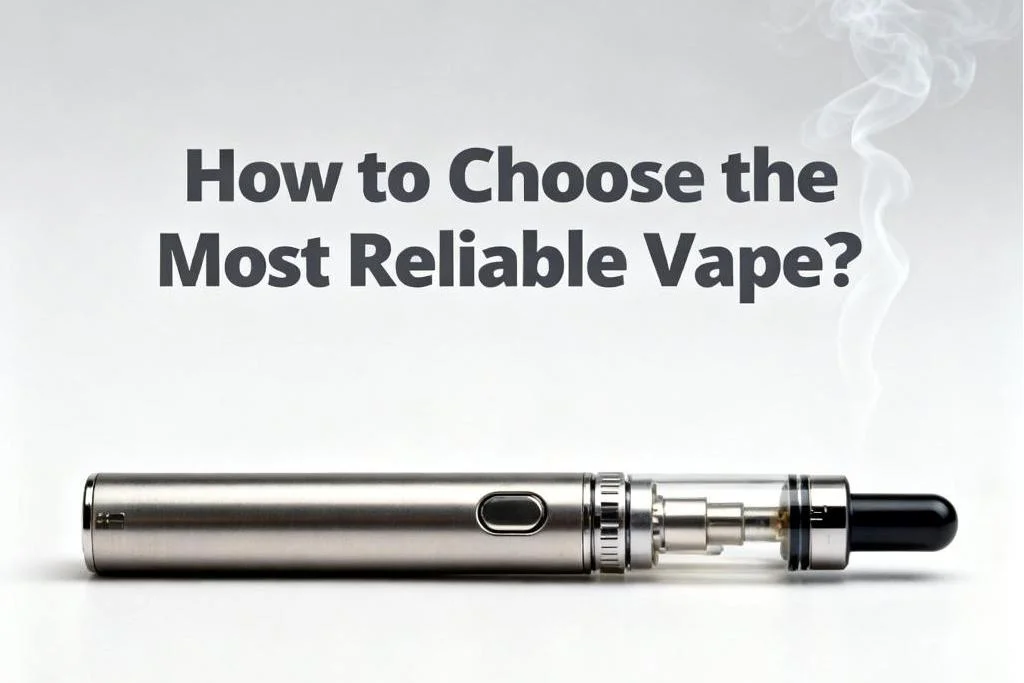Unclog Your Vape Pod: A Step-by-Step Guide
Have you ever found yourself puffing away on your vape pod only to realize that it feels like sipping a thick shake through a narrow straw? You're likely facing a clog. In this guide, we'll explore effective strategies for "how to unclog a vape pod". Let’s tackle this common issue and keep your vape performance at its peak.

Why Does My Pod Feel Clogged?
What actually leads to this frustrating issue? Understanding the reasons behind the clogging can help you identify and fix the problem more effectively.
1. Condensation Buildup
As you inhale the vapor from your vape, the warm vapor cools and condenses within the air pathway of the pod. This condensation can accumulate over time, gradually narrowing the airway until it becomes difficult to draw from the pod.
2. Viscosity of E-Liquids
Thicker, more viscous e-liquids leave more residue on the coil and wick, which can solidify and obstruct airflow. E-liquids with high sugar content or those flavored with creamy or dessert profiles are particularly prone to clogging.
3. Chamber Flooding
This issue arises when the vape pod is overfilled or left inactive for extended periods. Excess e-liquid can leak into the airway or other components where it doesn't belong, leading to immediate blockages.
4. Inappropriate Storage
For instance, leaving a vape pod in a car on a hot day can cause the e-liquid to thin and flood the system, while cold conditions can thicken the e-liquid, making it harder to vaporize and more likely to clog.
5. Coil Condition
Over time, the vape coil accumulates gunk from the continual vaporization of e-liquid, especially from sweeter or darker juices. A worn-out or dirty coil can significantly reduce airflow and efficiency, leading to frequent clogs.
6. Use Patterns
Frequent, short puffs can cause more rapid condensation and quicker clog formation compared to longer, more deliberate draws.

How to Unclog a Vape Pod?
Step 1: Disassemble Your Vape Pod
The first step in addressing a clog in your vape pod is to disassemble your vape device properly in order to have full access to all components needing cleaning or inspection. Start by carefully separating the pod from the battery base, typically done by a simple pull or a press-release mechanism depending on your specific model.
Once detached, assess how your pod is constructed. Some pods come with a removable mouthpiece or cap. If so, remove it to expose the internal components such as the coil and the wicking system. Be mindful during disassembly, since components of vape pods are delicate and can be damaged easily if excessive force is used.
For pods that feature replaceable coils, twist off the coil from the pod. If the coil is built-in, simply confirm clear access to it. Check your device’s manual to thoroughly grasp its anatomy and specific disassembly instructions to avoid accidental damage.
Lay out all the parts on a clean, dry surface to prevent any small components from getting lost and make it easier to monitor the reassembly process.
Step 2: Check the Airflow
A clear air path is essential for a smooth vaping experience and can often be the first place to look when dealing with a vape pod clog. Begin by visually inspecting the airway for any obvious obstructions. Look for accumulated e-liquid, dust, or debris possibly blocking the passage.
Using a flashlight can help you see inside the narrow air channels more clearly. If you spot any visible blockages, delicately employ a fine pin or a toothpick to painstakingly remove the debris. Be careful to apply moderate force in case of damage to the internal structure of the airway or push the debris further into the device.
Then, test the airflow without fully reassembling the pod. Place your mouth on the mouthpiece and gently inhale or blow softly through the other end, aiming to check if there are still obstructions that aren't visibly apparent.
If the airflow is still restricted, proceed to blow through the mouthpiece with moderate force, which can help dislodge any remaining e-liquid condensation or small particles stuck deeper within the airway. Attention to perform this step with the coil and wicking material removed to prevent any liquid from being forced into areas where it could cause further issues.

Step 3: Clean with a Cotton Swab
Now meticulously cleanse the internal components, particularly around the coil and the chamber where e-liquid and condensation most commonly accumulate. To do this effectively, use a cotton swab dipped in rubbing alcohol.
Rubbing alcohol is ideal for this task because it is excellent at dissolving sticky residues and e-liquid buildup, and it evaporates quickly, minimizing the risk of moisture damage to the electronic parts of your vape. Start by lightly moistening a cotton swab with the alcohol, damp but not dripping to avoid excess liquid entering sensitive areas.
Gently insert the swab into the pod’s chamber and wipe around the coil and any crevices where gunk tends to collect. Be careful around the wicking material if it's still in place, as it's delicate and can be easily damaged. Use a twisting motion to collect all the debris, and switch to a clean swab as soon as the one you're using becomes dirty. It may require several swabs depending on the amount of buildup.
In addition to cleaning the coil area, apply the cotton swab to the mouthpiece and any other narrow passages, whose areas can harbor condensation and residue contributing to clogging and poor vapor quality. Remove as much residue as possible for an unobstructed airflow and a clean vapor path.
Allow a few minutes after cleaning for the rubbing alcohol to complete evaporation. Ensure no alcohol vapor is inhaled on your next use before reassembling.
Step 4: Rinse with Warm Water
First, find out that your vape pod’s design is compatible with water rinsing — check the manufacturer’s instructions to confirm that submerging or exposing certain parts to water won't cause damage. If it’s safe to proceed, hold the components such as the mouthpiece, pod tank, and other non-electronic parts under warm, running water. Avoid using hot water as extreme temperatures can damage certain materials used in vape pods.
Gently agitate the parts under the water stream to help loosen and wash away any remaining impurities. For intricate parts or stubborn residue, adopt a soft-bristled brush, such as a toothbrush, to gently scrub the surfaces. Make sure to reach all the crevices and corners where gunk accumulates.
After rinsing, shake off any excess water and pat dry with a lint-free cloth. Let all components air dry completely on a towel or drying rack to ensure no moisture remains. Moisture in the device can lead to short circuits or corrosion if not properly dried.

Step 5: Dry Burn the Coil (if applicable)
Dry burning the coil is a technique used to clean residual gunk and build-up from the coil's surface after the initial cleaning steps. It's a method suited for coils that are not easily replaced or cleaned through traditional washing methods, but caution should be exercised to avoid damaging the coil.
Examine that your specific type of coil can withstand the process. Typically, coils made from materials like Kanthal or stainless steel are suitable for dry burning, but always check your device’s manual or manufacturer’s recommendations first.
To dry burn your coil, firstly completely dry the coil from any previous cleaning steps. Reassemble the necessary parts of the vape pod but do not refill the e-liquid yet. Attach the pod back to the battery, ensuring that all connections are secure.
Secondly, Turn on the device and pulse the fire button a few times for short intervals (about 2-3 seconds each) to heat the coil and burn off any remaining e-liquid buildup. Monitor the coil during this process to guarantee uniform glowing from the center outward. If it glows unevenly or hot spots are visible, let the coil cool down and adjust it slightly by strumming or repositioning it before dry burning again.
After a few pulses, allow the coil to cool completely before inspection, revealing a cleaner appearance with burnt-off carbon buildup. If the coil still appears dirty, you may repeat the process, but excessive dry burning can reduce the coil's lifespan. Once you're satisfied with the cleanliness of the coil, allow it to cool down thoroughly, then reassemble the rest of your vape pod.
Step 6: Reassemble and Test
Place the coil back into its housing, seated properly and securely. Misalignment can lead to poor electrical connections and inconsistent performance. If your pod uses a replaceable coil system, double-check that it's screwed in tightly and correctly, as loose connections can cause leaking or failure to fire.
Next, reattach any other components you dismantled, such as the wick (if applicable) and the mouthpiece. Warrant that every part fits snugly and that there are no gaps where e-liquid can escape. Handle these components gently to avoid damage and ascertain they fit back into place as intended.
Then, reconnect it to the battery unit and verify the connection between the pod and the battery is secure, as a loose connection can also lead to poor device performance. At this stage, it’s a good idea to check the battery's charge level to confirm it has enough power for testing.
Now, refill your pod with a small amount of e-liquid. Choose a familiar e-liquid so as to easily detect any discrepancies in flavor or performance that might indicate an issue with the reassembly.
After refilling, allow the device to sit for a few minutes to guarantee the full wick saturation with e-liquid, preventing dry hits or burning. Start with a few gentle puffs to test effective vapor production, without leaks or odd noises.

Navigating the troubleshooting of a clogged vape pod can help you achieve a cleaner, more satisfying vape, ensuring each session is as enjoyable as the last. Always refer back to these guidelines on how to unclog a vape pod and maintain it, so you can continue to enjoy the full potential of your vaping device without interruption.
TABLE OF CONTENTS
- Why Does My Pod Feel Clogged?
- 1. Condensation Buildup
- 2. Viscosity of E-Liquids
- 3. Chamber Flooding
- 4. Inappropriate Storage
- 5. Coil Condition
- 6. Use Patterns
- How to Unclog a Vape Pod?
- Step 1: Disassemble Your Vape Pod
- Step 2: Check the Airflow
- Step 3: Clean with a Cotton Swab
- Step 4: Rinse with Warm Water
- Step 5: Dry Burn the Coil (if applicable)
- Step 6: Reassemble and Test


